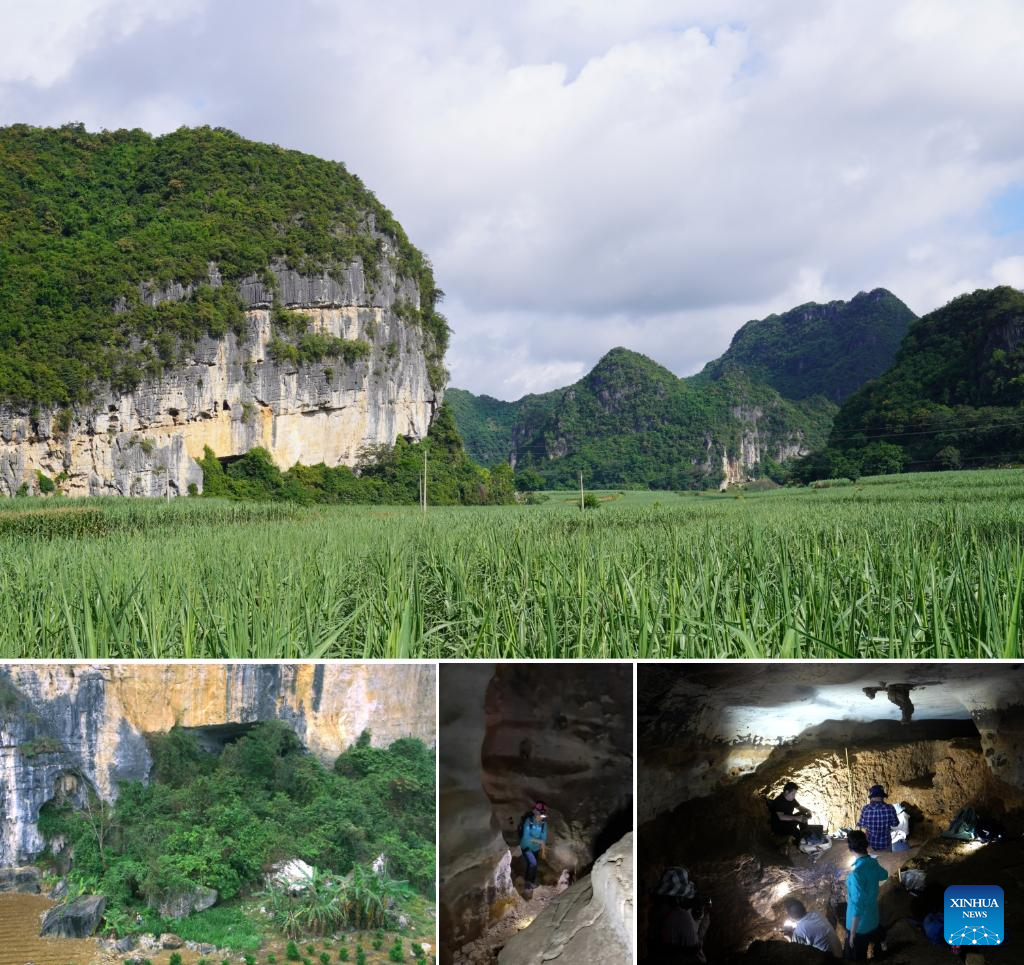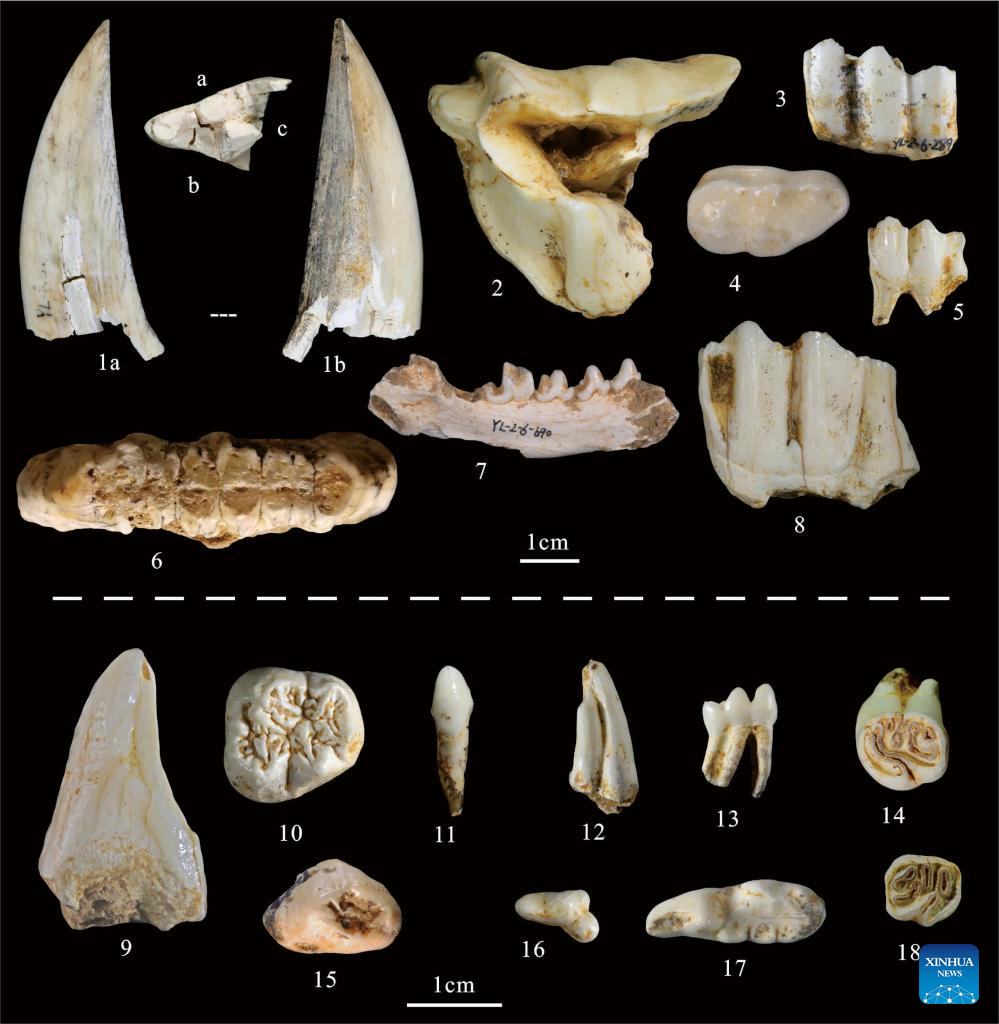New study sheds light on animal species turnover in south China

This undated combo photo shows Yanlidong, a cave site in south China's Guangxi Zhuang Autonomous Region. (Anthropology Museum of Guangxi/Handout via Xinhua)
NANNING, May 9 (Xinhua) -- A new study on the fossil records unearthed at Yanlidong, a cave site in south China's Guangxi Zhuang Autonomous Region, has filled in the blanks concerning the relationship between Mid-Pleistocene Transition (MPT) -- a period marked by the extensive forming of ice sheets and a drop in sea surface temperature -- and faunal turnover in south China.
The study, which was published in the international journal Historical Biology by a team of paleoanthropologists from the Anthropology Museum of Guangxi, said the Early Middle Pleistocene mammalian species replacement was extremely likely the result of the MPT.
The 21 mammalian species discovered at the Yanlidong cave site in the city of Chongzuo in 2017 were predominantly extant taxa -- species that are still in existence, while there were also a few species which are now extinct.
In addition, the traits of the fossils are emblematic of the transitional period from Early to Middle Pleistocene, that is to say the older species were being gradually replaced by new ones during the MPT.
The preliminary result derived from Uranium-Series Dating, a common technique used primarily in the dating of marine and terrestrial carbonates, shows that the Yanlidong fauna, which lived around 600,000 years ago, had essentially completed the "handover" from the species before them, most probably a result of climate changes in the Mid-Pleistocene period.
The causal link between the MPT and faunal turnover in south China had never been established previously due to a dearth of mammalian fossils, said Yao Yanyan, a researcher from the museum and the lead author of the paper.
She added that the subject had remained largely uncharted territory in academia.
Fossil records for mammalian species in southern China had always been scant, but the exciting discoveries at Yanlidong have provided an important foundation for studying species turnover in the region.

This undated image shows mammalian tooth fossils unearthed at Yanlidong, a cave site in south China's Guangxi Zhuang Autonomous Region. (Anthropology Museum of Guangxi/Handout via Xinhua)
Photos
Related Stories
Copyright © 2023 People's Daily Online. All Rights Reserved.









